Which Chickens Lay Purple Eggs? Understanding The Science of Egg Color!
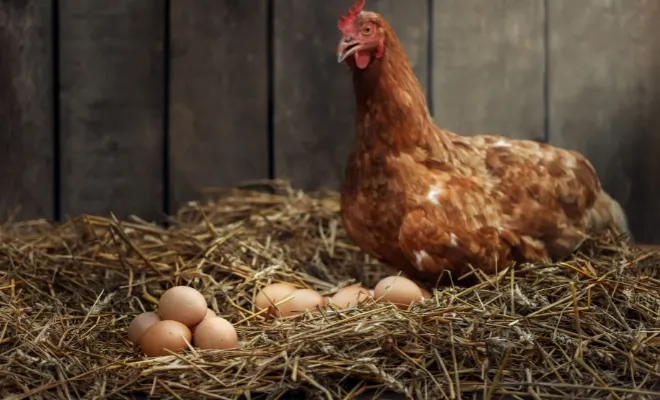
Have you ever wondered if chickens can lay eggs in vibrant shades of purple? But some of the breeds lay lavender-shade eggs!
Now, the question is which Chickens lay purple eggs? Chickens don’t lay eggs in a true purple hue. But some breeds produce eggs with a distinctive lavender or pinkish tint. The closest you’ll get are brown or blue eggs with a protective coating called the bloom. It’s what makes the eggs look purple.
There is a science behind the egg color of chickens and the influential factors. To reveal everything, go a little further to know the actual truth about chicken eggs.
Table of Contents
Which Chickens Lay Purple Eggs? Truth Revealed!
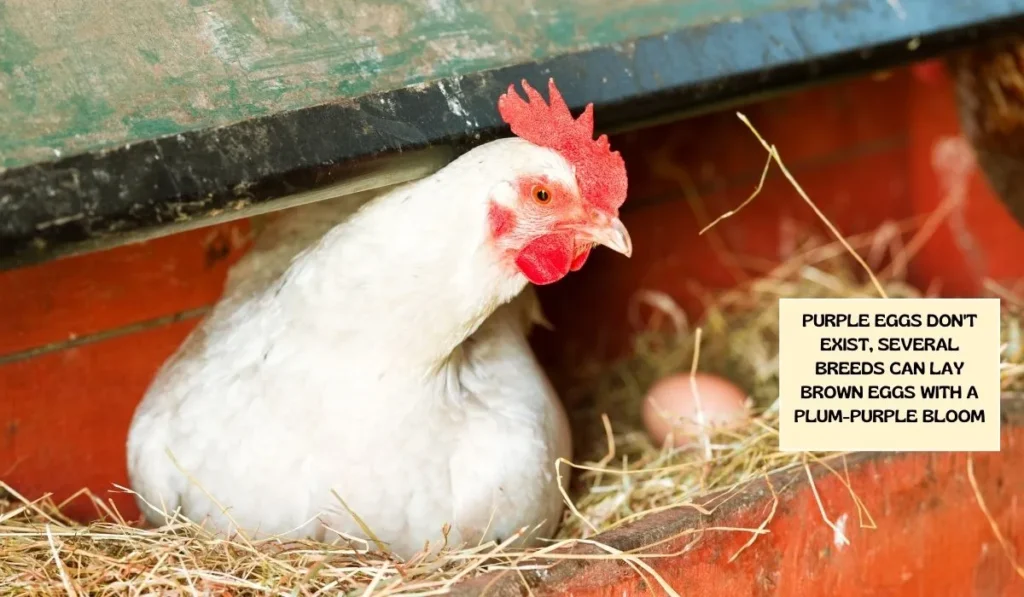
While true purple eggs don’t exist, several breeds can lay brown eggs with a plum-purple bloom. Croad Langshans and Olive Egger especially lay the type of eggs that look purple. Some other breeds also lay eggs that look purple but do not lay such color eggs.
But what is Bloom in Chicken’s Eggs?
“Bloom” on chicken eggs refers to a natural protective coating. It’s what we use before they lay eggs. It’s like a thin layer that covers the eggshell. This coating is also called the cuticle.
The bloom helps keep the egg fresh by preventing bacteria and dirt from getting inside. It acts as a shield, sealing the eggshell’s pores. If you wash the eggs, the bloom is removed, so it’s usually best to store unwashed eggs at room temperature.
Note: This protective layer is one of the reasons why freshly laid eggs can last longer. It’s even when you keep it without refrigeration compared to washed eggs.
See the video to understand blooms in chickens’ eggs.
Understanding The Science of Chicken Eggs Color
Eggshell colors are a result of pigments deposited during the formation of the eggshell. The main pigments responsible for different eggshell colors are:
Blue and Green Eggs: Biliverdin
Some chickens lay blue or green eggs because of a pigment called biliverdin, also found in animals’ bile. This pigment gives the eggs a unique bluish or greenish color. Breeds like Araucana and Ameraucana are known for these eggs.
According to an NCBI Study, In the part of the egg where the shell is formed, blue-shelled chickens had 8.25 +/- 2.55 nmol/g of biliverdin. While brown-shelled chickens had 1.29 +/- 0.12 units.
Brown Eggs: Protoporphyrin
Brown eggs get their color from a pigment called protoporphyrin. Hens add this pigment to the eggshell as it moves through their body. Chickens like Rhode Island Reds and Plymouth Rocks lay brown eggs with different shades.
White Eggs: No Pigment
White eggs, on the other hand, have no pigments. Breeds like Leghorns and Sussex lay these naturally white eggs. The lack of pigments doesn’t affect their taste or nutrition.
Purple Eggs: It’s The Bloom
Purple eggs, however, aren’t caused by pigments like biliverdin or protoporphyrin. It’s a protective coating called the bloom or cuticle, as I said. The bloom shields the egg from bacteria and dirt but doesn’t change the eggshell’s color.
Recommended Article: Understanding Chicken Behavior
List of 9 Breeds That Lay Purple Eggs
Truly purple eggs are just a myth. Some chicken breeds lay eggs with really cool colors that make you think of purple. Let’s look at 9 breeds with amazing eggs:
1. English Croad Langshans Breed

It’s easy to believe that English Croad Langshans lay purple eggs based on some descriptions! While they don’t lay true purple eggs, they can lay brown eggs with a thick, reddish bloom. Occasionally reflects light in a certain way making them appear lavender, plum, or even faintly purple.
2. Favorelles Chicken
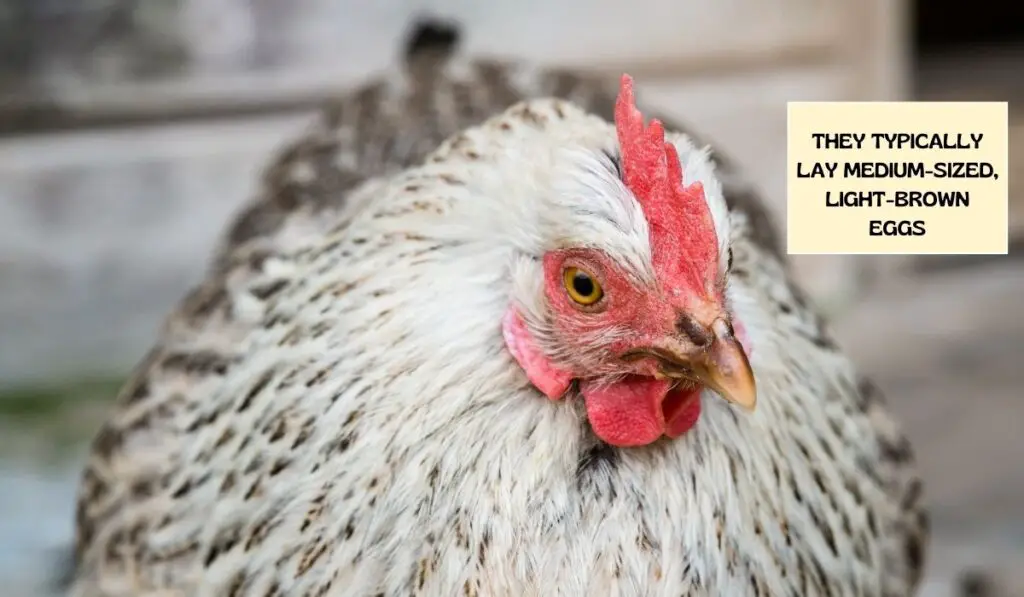
Favorelles don’t lay true purple eggs. They typically lay medium-sized, light-brown eggs. Sometimes with a delicate pink tint with pigments in the bloom, make it look purple. This pink bloom can occasionally, in the right light, give the impression of a lavender or plum hue.
3. Olive Eggers Chicken

These mixed-breed chickens are known for blue-green eggs. But sometimes, the brown part of the egg combines with a coating. It’s what makes the eggs look purple.
4. Ameraucanas Breed
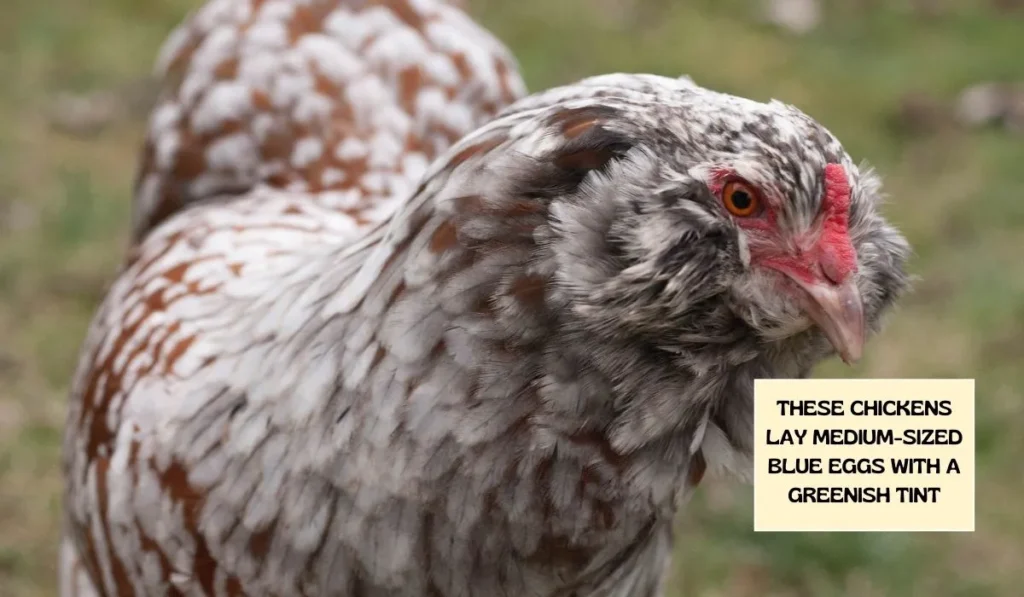
These chickens, related to Araucanas, lay medium-sized blue eggs with a greenish tint. It’s not exactly purple, but it can look a bit plum-like in certain lights.
5. Araucanas Chicken Breed

Famous for their turquoise and blue eggs, Araucanas don’t lay purple eggs. However, the eggs look shiny and have a touch of violet, especially when fresh.
6. Lakenvelders Breed
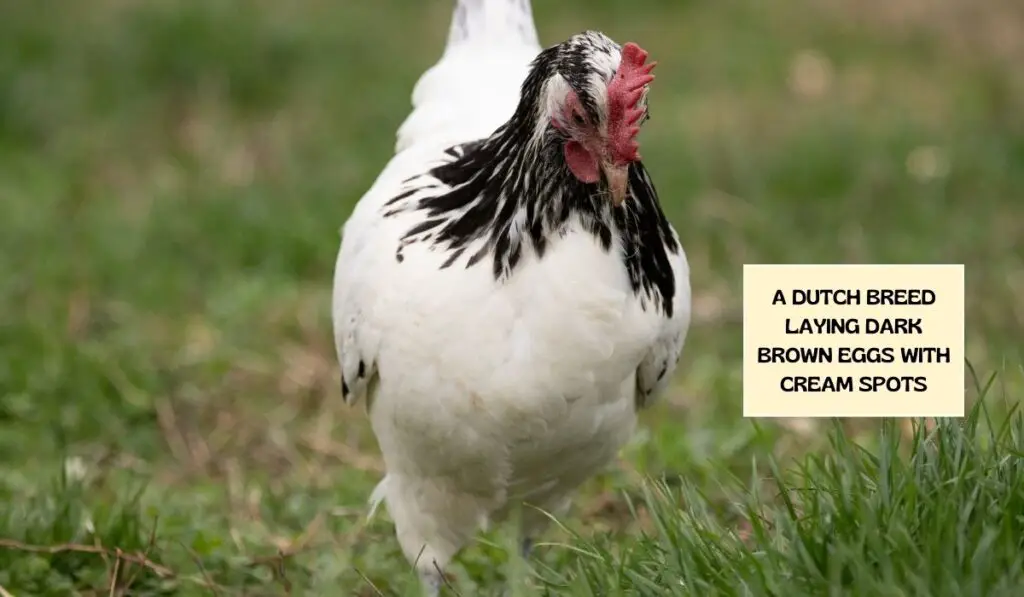
A Dutch breed laying dark brown eggs with cream spots. The rich brown combines with a coating. And it creates occasional whispers of purple, especially in older hens.
7. Isabrown Hybrid Chicken
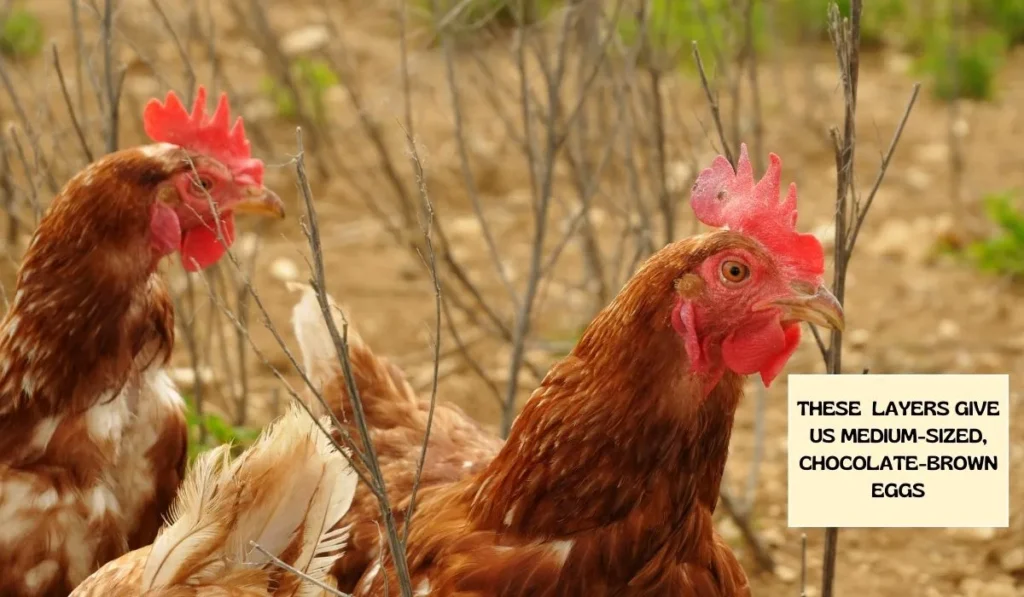
These busy layers give us medium-sized, chocolate-brown eggs. Not purple, but sometimes they can look a bit plum-like in certain light.
8. Easter Eggers Chicken Breed

Similar to Olive Eggers, these mixed-breed chickens can surprise us with a kaleidoscope of egg colors. Occasionally, the brown part combined with the coating might give a cool purple shimmer.
9. Cream Legbar Breed
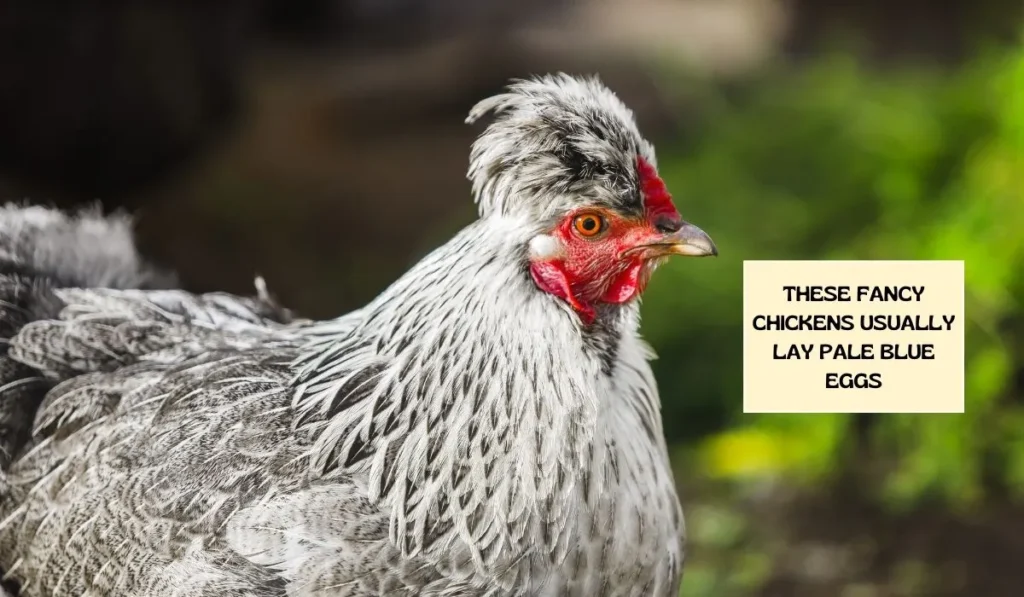
These fancy chickens usually lay pale blue eggs. But like Ameraucanas, the color can sometimes look a little lavender-gray in certain lights, adding to their delicate beauty.
Note: Washing the egg will remove the bloom, revealing the true brown color underneath.
2 Key Factors That Influence Chickens Egg Color
The color of a chicken’s egg is pretty interesting. It comes from a mix of things like genes, environment, and the hen’s health. Here’s what you need to know:
1. Genetical Facts
The kind of chicken breed makes a big difference. Some breeds have genes that give their eggs special colors. Like, Ameraucanas have a gene for blue eggs, and Rhode Island Reds have genes that make brown eggs.
Egg color is decided by many genes working together. The mix of genes from both chicken parents decides how light or dark the egg will be.
2. Diet and Environment
What the chicken eats can slightly change the egg color. Foods with carotenoids might make the yolk (the yellow part) richer. Also, this can affect how the eggshell looks a little.
If the chicken feels stressed or sick, it might make paler eggs with thinner shells. This can also change the egg color a bit.
Younger chickens make eggs with thicker coatings. It can affect the color, especially for brown or blue eggs. As chickens get older, the coating gets thinner, and the real shell color shows more.
Aside from all these things, bloom and pigmentation matter in the color of eggs.
Myth About Chickens Have Purple Eggs!

Here are the myths about chickens’ egg color –
Myth 1. People believe certain breeds of chickens lay eggs with a captivating purple hue.
In reality, no chicken lays eggs with a genuine purple hue. The nearest approximation involves breeds such as Croad Langshans, Easter Eggers, or Olive Eggers. They produce eggs that are brownish with a thick, reddish bloom.
Myth 2. The purple color indicates special properties or higher nutritional value.
But, the bloom’s color comes from pigments like protoporphyrin IX, unrelated to the egg’s nutritional content. Brown and white eggs offer the same nutritional value regardless of their bloom’s hue.
Myth 3. You can tell if a chicken will lay purple eggs by its looks.
While breeds like Olive Eggers are more likely to occasionally “surprise” with purple hues, there’s no guarantee. Even within the same breed, individual hens vary in bloom thickness and color.
Related Readings:
- Fancy Feather Foot Chicken Breeds
- The Classic Black Copper Maran Chicken
- 2 Of The Quietest Chicken Breeds
FAQs
Here are some other facts about chickens’ egg color. Check them out!
Q: What is the rarest color of chicken egg?
The rarest color of a chicken egg is generally considered to be a true blue. Breeds like the Araucana and Ameraucana are known for laying these unique blue eggs.
Q: What chicken lays pink eggs?
The Easter Egger chicken breed is known to lay eggs in various colors, including shades of pink. These chickens are a mixed breed and can surprise with a variety of egg colors.
Q: Which chicken lays olive eggs?
The Olive Egger chicken, a hybrid breed, is known for laying eggs with olive-green hues. This color is achieved through the combination of blue and brown egg-laying genetics.
Q: What chicken has the prettiest eggs?
People find the eggs of the Cream Legbar chicken breed to be among the prettiest. These chickens typically lay pale blue eggs, adding a touch of elegance to the egg basket.
Conclusion
So, which chickens lay purple eggs? In truth, no chickens lay purple eggs. While some breeds produce eggs with unique hues, like lavender or pinkish tones, genuine purple eggs are a myth. Understanding the science behind egg colors, influenced by genetics, diet, and environment, helps debunk misconceptions.
The popular notion of purple eggs often stems from the protective coating called the bloom. So, it’s essential to rely on accurate information to understand the different colors of chicken eggs.







I have Blue Azure chickens that lay light blue eggs